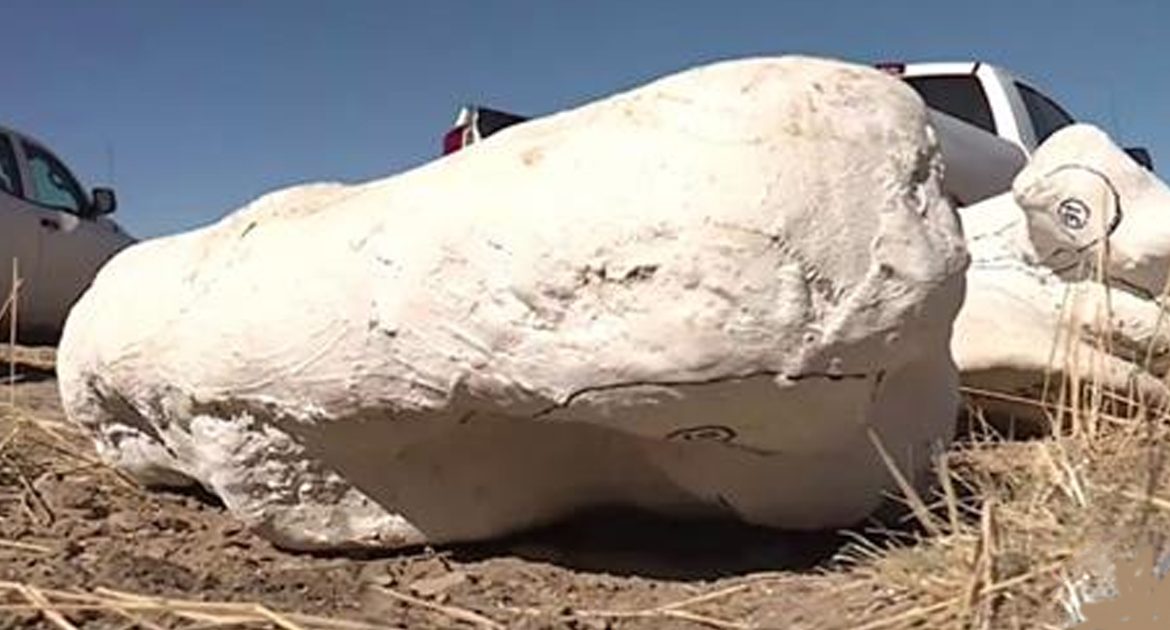An amazing discovery was made by paleontologists in Utah recently: a nearly complete skeleton of a type of tyrannosaur that roamed western North America millions of years ago.
76 million years ago, to be exact. The skeleton was airlifted to the Natural History Museum of Utah by helicopter where it can be further uncovered and studied. Presently, it’s believed that the dinosaur was 12 to 15 years old when it died and was buried in a river channel during a flood.
The remains are believed to be the species Teratophoneus curriei, which lived during the Late Cretaceous period 66-90 million years ago. The animal would have been between 17 and 20 feet long, with a short head.
Dr. Randall Irmis, curator of paleontology at the museum and associate professor in the Department of Geology and Geophysics at the University of Utah, explained, “With at least 75 percent of its bones preserved, this is the most complete skeleton of a tyrannosaur ever discovered in the southwestern US. We are eager to get a closer look at this fossil to learn more about the southern tyrannosaur’s anatomy, biology, and evolution.”
The skeleton was first discovered in 2015 in the Kaiparowits Formation, which is part of the Bureau of Land Management’s Grand Staircase-Escalante National Monument (GSENM).
Question of the week: If you could take a vacation anywhere in the world, where would it be?
GSENM Paleontologist Dr. Alan Titus, who discovered the fossil explained, “The monument is a complex mix of topography – from high desert to badlands – and most of the surface area is exposed rock, making it rich grounds for new discoveries.”
Titus added, “And we’re not just finding dinosaurs, but also crocodiles, turtles, mammals, amphibians, fish, invertebrates, and plant fossils – remains of a unique ecosystem not found anywhere else in the world.”
This find is “extremely significant” since it could be a new species, according to experts.
Irmis noted: “We’ll also look at the size of this new fossil, its growth pattern, biology, reconstruct muscles to see how the animal moved, how fast could it run, and how it fed with its jaws. The possibilities are endless and exciting.”
Some people weighing in with comments on the Daily Mail‘s coverage of the find were impressed, with one person saying: “I always wanted to be a paleontologist as a kid. Amazing discovery!
One person, however, was not impressed, commenting: “76 million years rubbish. Assumption on top of assumption on top of assumption, using fossils to date fossils, local rock used for dating and very big guess rubbish.”
Another commenter responded: “Clearly you have zero scientific education. Science is the art of asking questions, testing them and then, above all, having your results or discoveries independently verified. And science is, by default, skeptical – everything has to be proven. Next comes the theory which in science means the best explanation so far possible. The theory is then always open to update and ‘falsifiable’. Falsifiable means if something new is discovered that doesn’t fit; the theory needs either revision or replacing. Nothing as yet has falsified evolution, though one fossil out of sequence could do this.”
Another noted a cool aspect of the museum: “They find a lot of fossils in Utah. The natural history museum has a really cool work area with glass windows where you can watch the staff work on stuff like this in their lab.”






